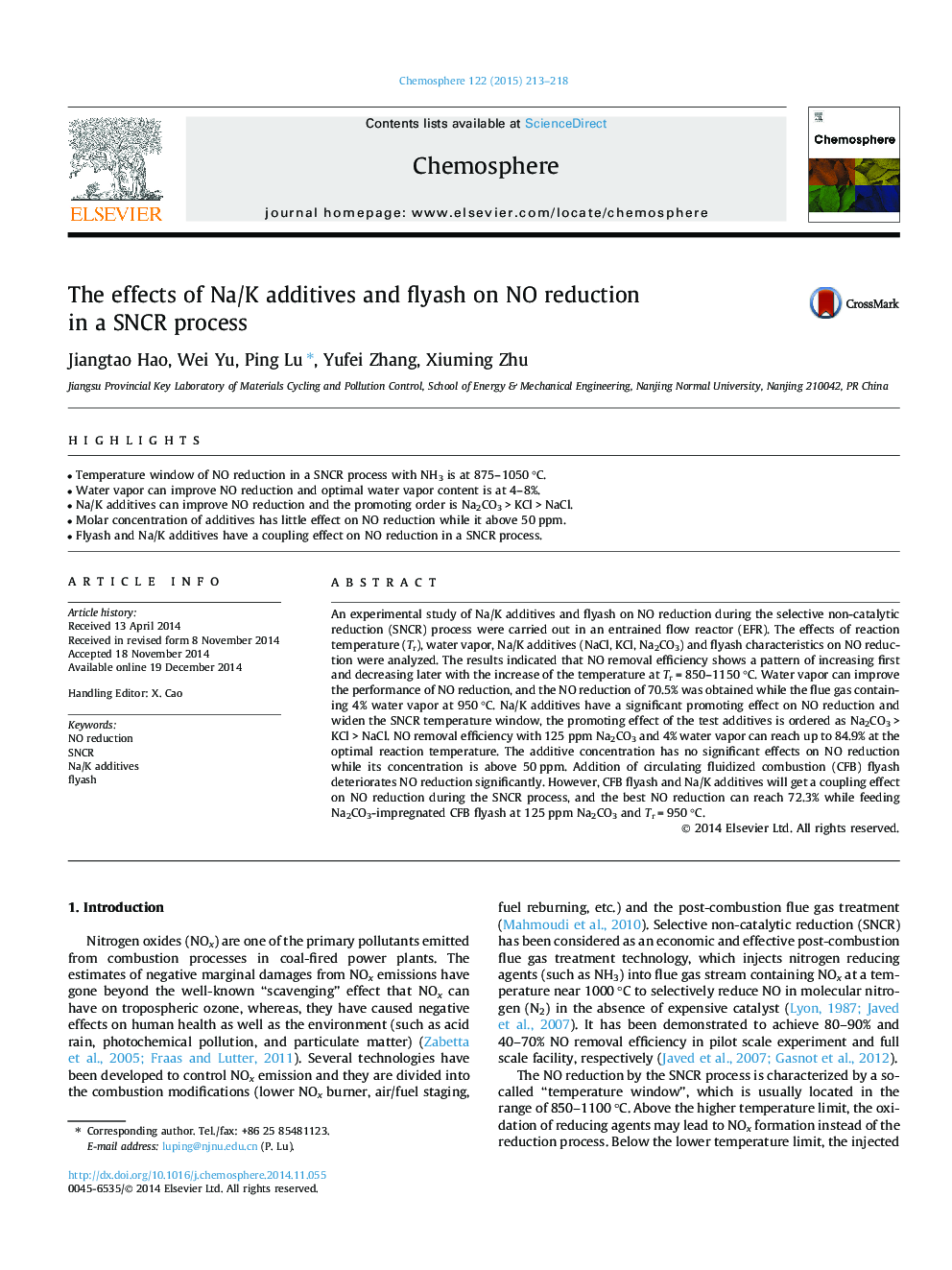| Article ID | Journal | Published Year | Pages | File Type |
|---|---|---|---|---|
| 4408395 | Chemosphere | 2015 | 6 Pages |
•Temperature window of NO reduction in a SNCR process with NH3 is at 875–1050 °C.•Water vapor can improve NO reduction and optimal water vapor content is at 4–8%.•Na/K additives can improve NO reduction and the promoting order is Na2CO3 > KCl > NaCl.•Molar concentration of additives has little effect on NO reduction while it above 50 ppm.•Flyash and Na/K additives have a coupling effect on NO reduction in a SNCR process.
An experimental study of Na/K additives and flyash on NO reduction during the selective non-catalytic reduction (SNCR) process were carried out in an entrained flow reactor (EFR). The effects of reaction temperature (Tr), water vapor, Na/K additives (NaCl, KCl, Na2CO3) and flyash characteristics on NO reduction were analyzed. The results indicated that NO removal efficiency shows a pattern of increasing first and decreasing later with the increase of the temperature at Tr = 850–1150 °C. Water vapor can improve the performance of NO reduction, and the NO reduction of 70.5% was obtained while the flue gas containing 4% water vapor at 950 °C. Na/K additives have a significant promoting effect on NO reduction and widen the SNCR temperature window, the promoting effect of the test additives is ordered as Na2CO3 > KCl > NaCl. NO removal efficiency with 125 ppm Na2CO3 and 4% water vapor can reach up to 84.9% at the optimal reaction temperature. The additive concentration has no significant effects on NO reduction while its concentration is above 50 ppm. Addition of circulating fluidized combustion (CFB) flyash deteriorates NO reduction significantly. However, CFB flyash and Na/K additives will get a coupling effect on NO reduction during the SNCR process, and the best NO reduction can reach 72.3% while feeding Na2CO3-impregnated CFB flyash at 125 ppm Na2CO3 and Tr = 950 °C.
